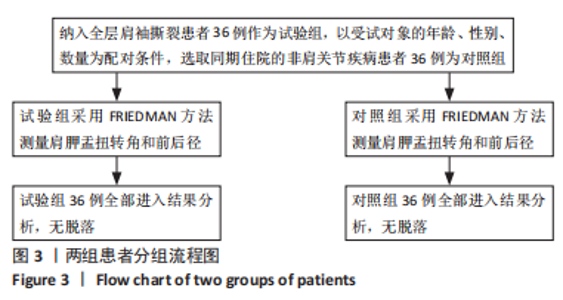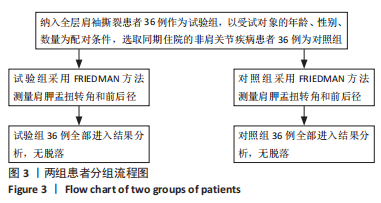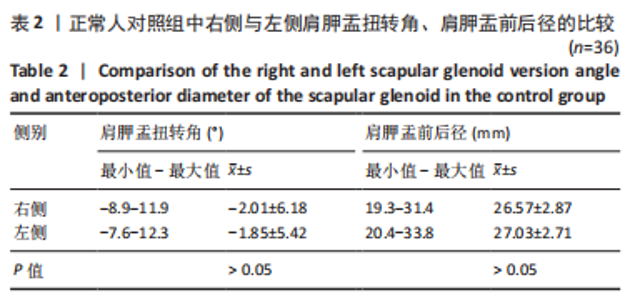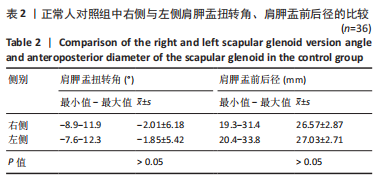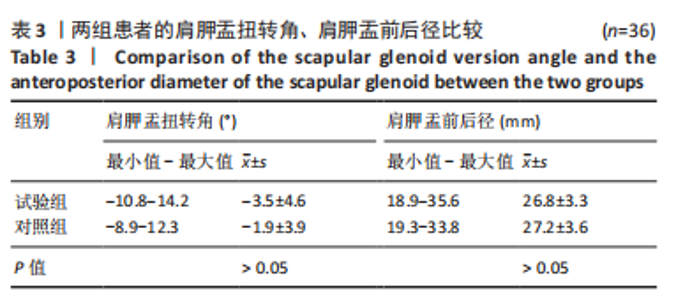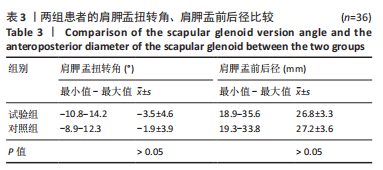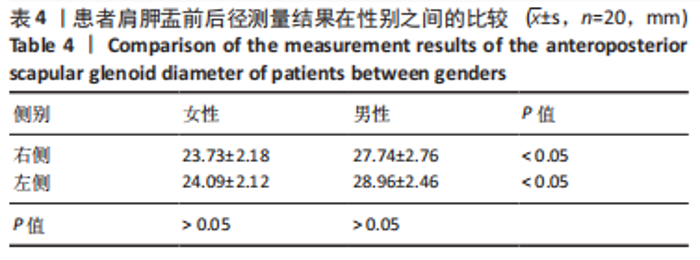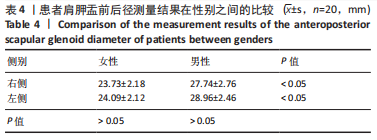[1] CAK A, ONO DY, MICHAEL J, et al. Full-Thickness Rotator Cuff Tears: What Is the Rate of Tear Progression? A Systematic Review. Arthroscopy. 2019;35(1):228-234.
[2] 易刚,杨静,张磊,等.肌腱切断和肌腱固定修复伴肩袖损伤肱二头肌长头腱病变疗效比较的Meta分析[J]. 中国组织工程研究,2018, 22(24):3921-3929.
[3] SHI X, XU Y, DAI B, et al. Effect of different geometrical structure of scapula on functional recovery after shoulder arthroscopy operation. J Orthop Surg Res. 2019;14(1):312.
[4] ZAID MB, YOUNG NM, PEDOIA V, et al. Anatomic shoulder parameters and their relationship to the presence of degenerative rotator cuff tears and glenohumeral osteoarthritis: a systematic review and meta-analysis. J Shoulder Elbow Surg. 2019;28(12):2457-2466.
[5] MATSUKI K, SUGAYA H, HOSHIKA S, et al. Three-dimensional measurement of glenoid dimensions and orientations. J Orthop Sci. 2019;24(4):624-630.
[6] MOOR BK, BOUAICHA S, ROTHENFLUH DA, et al. Is there an association between the individual anatomy of the scapula and the development of rotator cuff tears or osteoarthritis of the glenohumeral joint?: A radiological study of the critical shoulder angle. Bone Joint J. 2013; 95-B(7):935-941.
[7] FRIEDMAN RJ, HAWTHORNE KB, GENEZ BM. The use of computerized tomography in the measurement of glenoid version. J Bone Joint Surg Am. 1992;74(7):1032-1037.
[8] NYFFELER RW, JOST B, PFIRRMANN CWA, et al. Measurement of glenoid version: Conventional radiographs versus computed tomography scans. J Shoulder Elbow Surg. 2003;12(5):493-496.
[9] MATSUMURA N, OKI S, OGAWA K, et al. Three-dimensional anthropometric analysis ofthe glenohumeral joint in a normal Japanesepopulation. J Shoulder Elbow Surg. 2016;25(3):493-501.
[10] 孙贺,李哲,王建华,等.肩胛骨的解剖学研究[J].临床和实验医学杂志,2015,14(22):1858-1861.
[11] MERRILL A, GUZMAN K, MILLER SL. Gender differences in glenoid anatomy: an anatomic study. Surg Radiol Anat. 2009;31(3):183-189.
[12] BOILEAU P, CHEVAL D, GAUCI MO, et al. Automated Three-Dimensional Measurement of Glenoid Version and Inclination in Arthritic Shoulders. J Bone Joint Surg Am. 2018;100(1):57-65.
[13] CHURCHILL RS, BREMS JJ, KOTSCHI H. Glenoid size, inclination, and version: an anatomic study. J Shoulder Elbow Surg. 2001;10(4):327-332.
[14] HOHMANN E, TETSWORTH K. Glenoid version and inclination are risk factors for anterior shoulder dislocation. J Shoulder Elbow Surg. 2015; 24(8):1268-1273.
[15] KANDEMIR U, ALLAIRE RB, JOLLY JT, et al. The relationship between the orientation of the glenoid and tears of the rotator cuff. J Bone Joint Surg. 2006;88(8):1105-1109.
[16] 张继民,邓冠华,涂建华.基于MSCT的肩关节骨性结构与肩袖损伤的关系探讨[J]. 中国医药科学,2019,9(1):139-142,252.
[17] 周建波.肩关节骨性结构与肩袖损伤的相关性研究[D].重庆:第三军医大学,2011.
[18] PIPONOV HI, SAVIN D, SHAH N, et al. Glenoid version and size: does gender, ethnicity, or body size play a role? Int Orthop. 2016;40(11):1-7.
[19] TÉTREAULT P, KRUEGER A, ZURAKOWSKI D, et al. Glenoid version and rotator cuff tears. J Orthop Res. 2004;22(1):202-207.
[20] BASSETT RW, BROWNE AO, MORREY BF, et al. Glenohumeral muscle force and moment mechanics in a position of shoulder instability. J Biomech. 1990;23(5):405,409-407,415.
[21] MATSUMURA N, OGAWA K, KOBAYASHI S, et al. Morphologic features of humeral head and glenoid version in the normal glenohumeral joint. J Shoulder Elbow Surg. 2014;23(11):1724-1730. |
